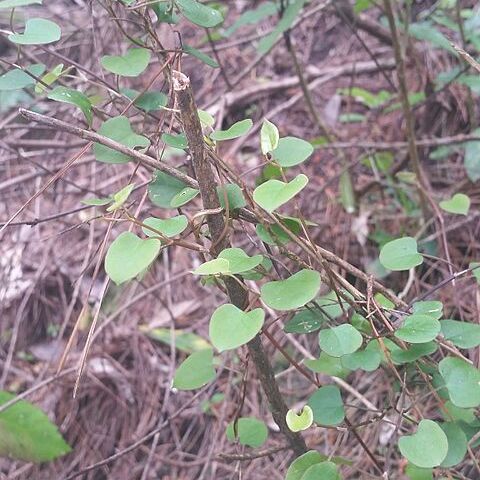Climber to 4 m high, much branched, dioecious, glabrous; bark grey. Leaves alternate, chartaceous; petiole 1–2.5 cm long; lamina broadly ovate (pandurate in juvenile plants), 2–8 cm long, 1–3 cm wide, truncate to very shallowly subcordate at base, abruptly acuminate at apex. Inflorescence axillary or terminal, paniculate, (2–) 5–10 cm long. Perianth lobes greenish. Nut trigonous, 3–4 mm long, black.
A climber. It grows 4 m tall. It has many branches. The bark is grey. The leaves are alternate and papery. The leaf stalk is 1-2.5 cm long. The leaf blade is broadly oval. It is 2-8 cm long and 1-3 cm wide. It tapers quickly at the tip. The flowers can be in the axils of leaves or at the ends of branches. They are in a panicle 5-10 cm long. The nut is 3 sided. It is 3-4 mm long and black.

